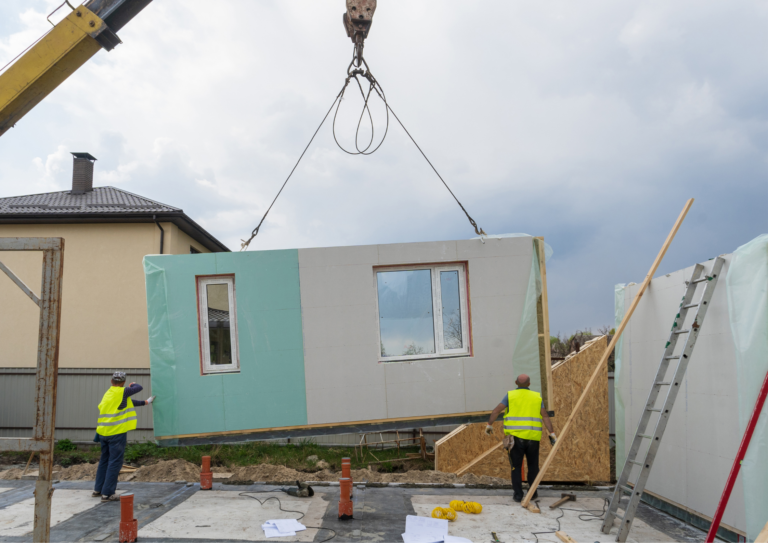Nowadays, it is important for every individual to make an effort in resolving issues related to climate change and global warming. Materials that are not harmful for environment are knows as eco-friendly materials. They have no negative impact on environment throughout their life. This blog post is about environmentally friendly materials to build a house. We will explore the positive aspects of Eco-friendly building materials and how they can contribute to a more sustainable future.
Table of Contents
The Need for Eco-Friendly Building Materials
Traditional construction methods are major cause of environmental pollution. Every construction project results in greenhouse gas emissions, thus contributing to global warming. That’s why use of environmentally friendly house building materials are need of the hour.
Sustainable Sourcing
Sustainable sourcing is a primary feature of eco building materials. These materials, like bamboo, cork or reclaimed wood are often derived from these sources. Use of the most sustainable building materials should be promoted to address environment related issues. Based on information provided by the World Green Building Council the construction industry consumes around 30 to 40% of energy and contributes to approximately 30% of greenhouse gas emissions worldwide. Use of eco-friendly materials can play a role, in reducing these numbers.
Reduced Carbon Footprint
Eco-friendly building materials helps to reduce carbon footprint. For example, materials like rammed earth and straw bales require less energy in their production and release lesser greenhouse gases compared to their conventional counterparts.
The United Nations Environment Program (UNEP) reports that the production of cement, a primary component of concrete, accounts for about 8% of global carbon dioxide (CO2) emissions. If we use alternate building materials to concrete, the carbon footprint can be reduced to a great extent.
Types of Eco-Friendly Building Materials
Bamboo
Bamboo is a natural material which can be used in building construction. Trend of using bamboo as an eco-friendly material for building a house has gained popularity in recent years. It has various properties which makes it a good choice to be used in construction.
- Lightweight
- Strong
- Bamboo can grow up to 91 centimeters (36 inches) in a single day, making it one of the fastest-growing plants on Earth.
Research is going on to use bamboo as a reinforcement material in cement, thus replacing/reducing steel. However, drawback of using bamboo as a reinforcement is that it requires more surface area due to its large size. If in future, engineers solve this problem then that would a great milestone in construction industry.

Recycled Materials
Using recycled plastic, reclaimed wood and recycled steel, emissions of greenhouse gases can be immensely reduced. Recycled materials play a significant role in sustainable building construction. Reduction in waste material will help to make environment better. Most environmental issues can be addressed by working on principles of sustainable building design.
The U.S. Environmental Protection Agency (EPA) estimates that recycling aluminum saves 95% of the energy required to make the same amount of aluminum from its raw materials.

Straw Bales
Straw bales are an excellent example of an eco-friendly building material.
- Low environmental impact
- It can be used as natural insulation
- Reduces energy consumption
A well-insulated straw bale home can achieve energy savings of up to 75% compared to conventional construction methods, according to the Straw Bale Association of Texas.
Rammed Earth
Rammed earth construction involves compaction of natural raw materials like earth, chalk, lime, or gravel. It is interesting to note that this is an ancient technique but has been recognized in recent years as sustainable building method. This method is fast and economical.
Cork
Cork is a natural, renewable and sustainable construction material harvested from cork oak trees without harming the tree itself. Uses in building construction:
- Flooring
- Wall coverings
- Insulation
Hemp Crete
Hemp Crete is a bio-composite of hemp fibers, lime, and water. It is lightweight and provides excellent insulation properties and alternative building materials to concrete but has certain limitations. Hemp grows quickly and requires minimal water and pesticides. Hemp Crete is not as strong as normal concrete but can be used in elements where strength is not our priority.
Ferrock
Ferrock is one of alternative building materials to concrete. It is environmentally friendly.
Following features of ferrock makes it a unique eco-friendly building material:
| Carbon Negative | It absorbs carbon dioxide like a sponge. |
| Suitable for Marine Environments | In saltwater, traditional concrete cannot sustain, ferrock can be used in marine environments. Studies have shown that ferrock become even more stronger when comes in contact of saltwater. |
| Compressive Strength | According to research, ferrock is 5 times stronger in compression as compared to traditional concrete. |
Benefits of Eco-Friendly Building Materials
| Energy Efficiency | – Many eco-friendly materials provide better insulation and thermal regulation – Lower energy consumption and reduced utility bills. – According to the U.S. Department of Energy, heating and cooling account for about 48% of the energy used in a typical U.S. home. Improved insulation can lead to significant energy savings. |
| Healthier Indoor Environments | – Eco-friendly materials are often non-toxic – Emit fewer volatile organic compounds (VOCs) |
| Longevity | – Some eco-friendly building materials, like bamboo and rammed earth, are exceptionally durable. – This longevity reduces the need for frequent replacements and, in turn, reduces waste. |
| Recycled waste | – Reduces waste material, making environment cleaner – Promotes circular economy – The EPA reports that in the United States, construction and demolition debris account for more than 600 million tons of waste annually, but recycling efforts divert over 90 million tons from landfills. |
| Lower Environment impact | – Less carbon footprint – Reduced waste material – By increasing energy efficiency, demand of fossil fuels can be reduced, creating positive impact on environment. |
If we want to save our environment for healthy future of our next generations, we should follow principles of sustainable building design. Using eco-friendly materials for building construction can be a great step towards achieving sustainability goals. It is a pressing need to build awareness among masses to maximize the use of ecofriendly materials for building a house. In this way, we can make our home earth greener and healthier.






2 comments
Building an Environmentally Friendly Home You Need to Know
[…] eco-friendly materials for building construction can be a great step towards achieving sustainability goals. Using recycled materials like recycled […]
Recycled Concrete: Everything You Need To Know - brickborne
[…] as it is a major constituent element of the construction process. In this blog, we will learn about recycled concrete because it is important to consider the environmental impacts of the production and disposal of […]